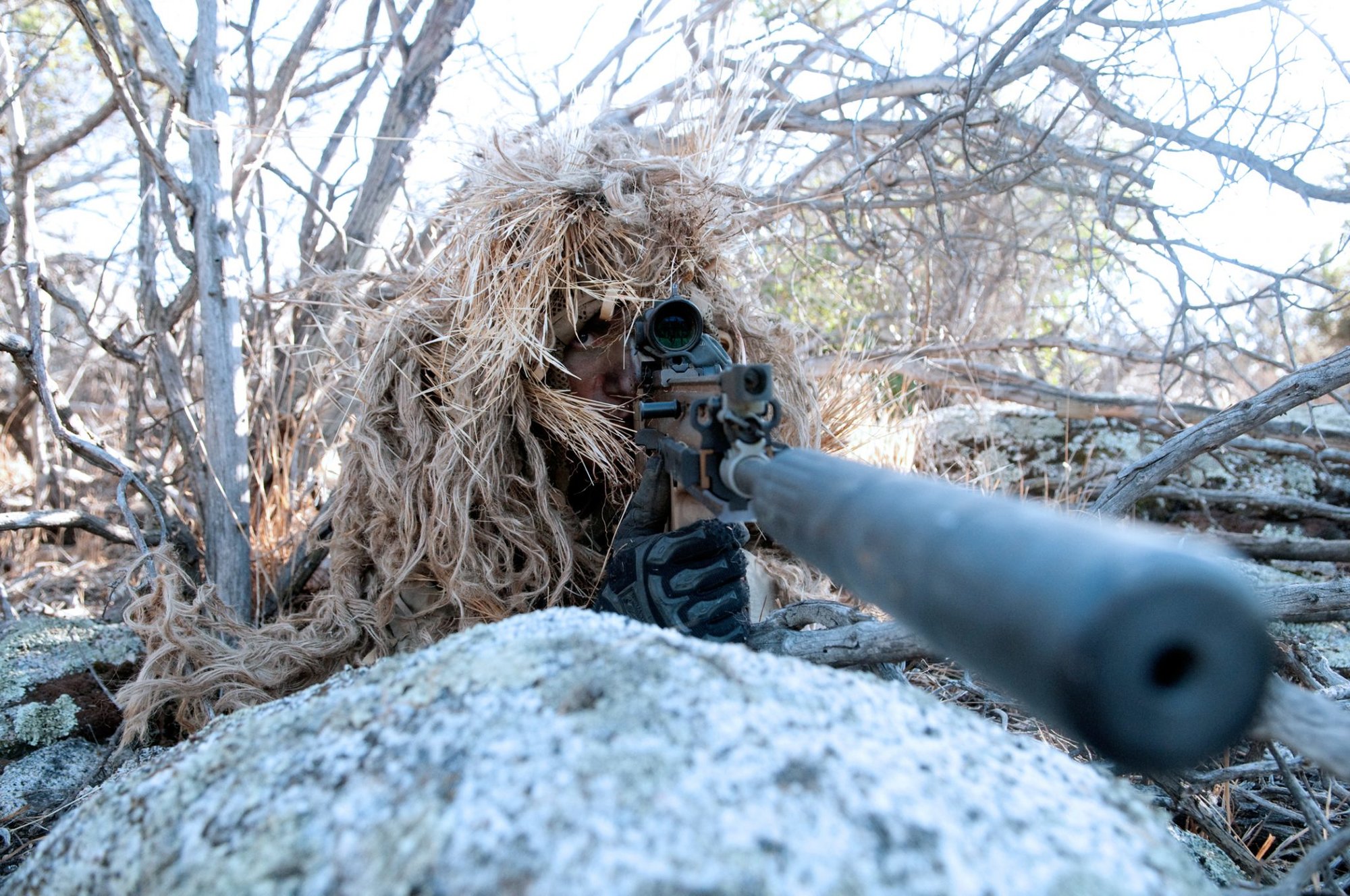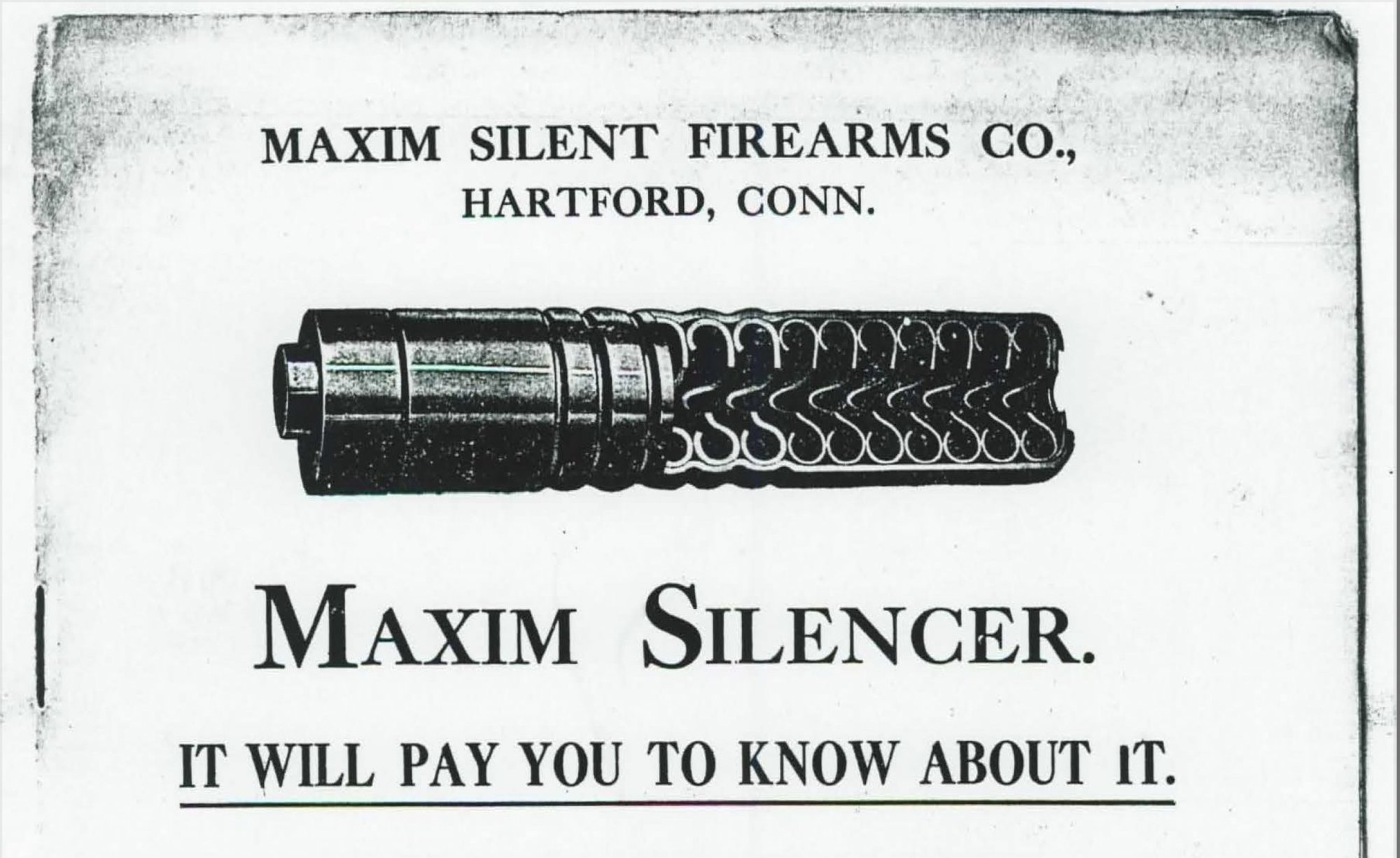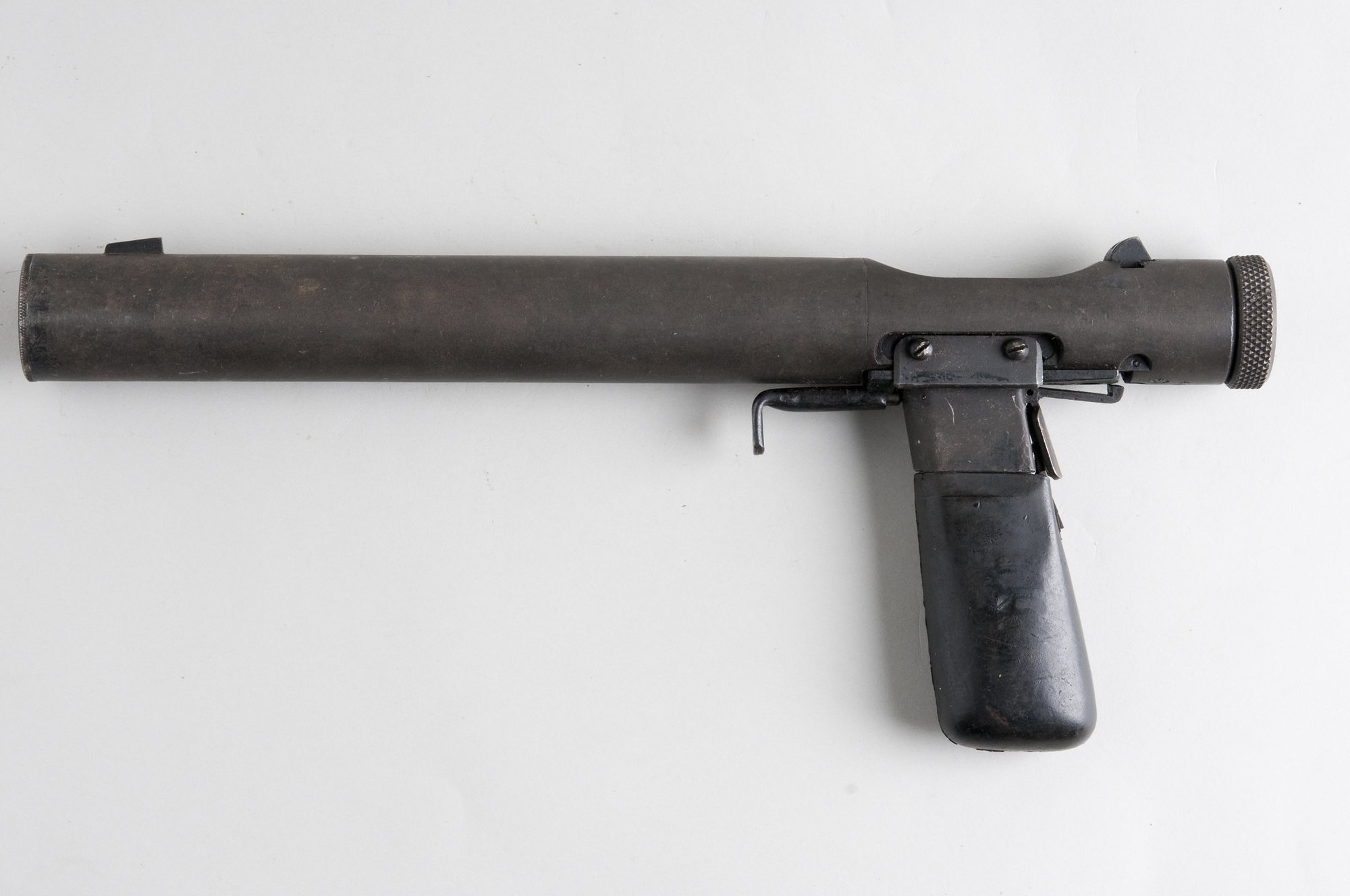
A Navy SEAL sniper with a suppressor on his weapon. Photo courtesy of sealswcc.com (https://www.sealswcc.com/images/photo-gallery/seal/large/navy-seal-photo-013.jpg).
In the early 1900s, Hiram Percy Maxim was a New York-born inventor with a passion for pioneering automobiles. He patented a gas-powered bicycle and helped design an early automobile, built in Hartford, Connecticut. But he heard his real calling in making cars harder to hear, developing silencing devices for motor vehicle exhaust systems.
Maxim had family ties in the firearms industry; his father, Sir Hiram Stevens Maxim, invented a portable, fully automatic machine gun, called the Maxim Gun. And his uncle, Hudson Maxim, invented the first smokeless gunpowder. In 1902, Maxim took similar technology he once used in car mufflers and produced the first commercially available firearms suppressor. He founded Maxim Silencer and patented the proprietary tubular device in 1909. The Maxim Silencer attached to a barrel of a firearm to reduce noise and muzzle flash.

The term “silencer” was never accurate; Maxim’s device didn’t eliminate sound. But it was a clever marketing device. The Maxim Silencer was advertised first in sporting goods catalogs for sportsmen. It was made for automatic rifles, single-shot rifles, carbines, single-shot target pistols, and even large-caliber Winchester and Remington rifles.
A prominent supporter of the Maxim Silencer was Theodore Roosevelt, who had one attached to his Winchester 1894 carbine. “Father favored the silencer for early morning hunting expeditions to eliminate varmints around Sagamore Hill,” his son Archie said. “He felt it best not to wake the neighbors.”
The National Firearms Act of 1934 restricted and regulated suppressors on firearms and halted their development for the next 40 years, a move that bit into organized crime violence. But the US military and other countries began experimenting with suppressors of their own.

William De Lisle, an English engineer who worked for the Ministry of Aircraft Production, grabbed the attention of the British Special Operations Executive (SOE) for his De Lisle Commando Carbine. The shoulder-fired rifle was modified to chamber .45 cartridges from a Colt 1911A1 pistol magazine. Its effective range was around 200 meters (219 yards), and the bullets were subsonic, which effectively erased the sonic “crack” of higher-velocity bullets. Although the SOE sporadically employed the De Lisle Commando Carbine during World War II, it only became prominent during the Malayan Emergency. Another suppressed weapon of the war was the Welrod, a bolt-action single-shot pistol designed for covert work.
One of the wildest moment in the history of suppressors occurred in 1944 when William J. “Wild Bill” Donovan, a World War I Medal of Honor recipient and the director of the Office of Strategic Services (OSS), visited the White House to brief President Franklin Delano Roosevelt on a new innovation. Donovan was excited to show off a new .22-caliber High Standard suppressed pistol the OSS Research & Development branch had developed. But a meeting ran long, leaving Donovan waiting in the Oval Office. With time on his hands, Donovan found a sandbag, fired 10 rounds from his suppressed pistol into it, then presented the bullet-ridden sandbag to the president when he emerged from his meeting. No one had heard the shots. Roosevelt kept the weapon as a souvenir, which is on display at the Franklin D. Roosevelt Presidential Library and Museum in Hyde Park, New York. The weapon saw real action during the Cold War, carried by Francis Gary Powers, the U-2 pilot shot down over Russia.
During the Vietnam War, the Swimmer Weapons System program developed a suppressed pistol for the Underwater Demolition Teams and Navy SEALs. They used a modified 9 mm Smith & Wesson M39 pistol with a detachable suppressor called the Mk 22, but it became famous among frogmen as the “Hush Puppy.” The name says it all: It was used against sentry dogs and other animals to avoid detection. The Military Assistance Command Vietnam — Studies and Observations Group, commonly known as MACV-SOG, packed Uzis with detachable suppressors in kits for nighttime parachute infiltrations.
A favorite among MACV-SOG commandos was the .45 suppressed M3A1 “Grease Gun.” Several members, veterans of elite Ranger, OSS, and 1st Special Service Force units in World War II, preferred to carry weapons they were familiar with. Others who worked with long-range rifles used the Sionics Silent Sniper, an M1 carbine converted to 9 mm.
Read Next:

Matt Fratus is a history staff writer for Coffee or Die. He prides himself on uncovering the most fascinating tales of history by sharing them through any means of engaging storytelling. He writes for his micro-blog @LateNightHistory on Instagram, where he shares the story behind the image. He is also the host of the Late Night History podcast. When not writing about history, Matt enjoys volunteering for One More Wave and rooting for Boston sports teams.
BRCC and Bad Moon Print Press team up for an exclusive, limited-edition T-shirt design!
BRCC partners with Team Room Design for an exclusive T-shirt release!
Thirty Seconds Out has partnered with BRCC for an exclusive shirt design invoking the God of Winter.
Lucas O'Hara of Grizzly Forge has teamed up with BRCC for a badass, exclusive Shirt Club T-shirt design featuring his most popular knife and tiomahawk.
Coffee or Die sits down with one of the graphic designers behind Black Rifle Coffee's signature look and vibe.
Biden will award the Medal of Honor to a Vietnam War Army helicopter pilot who risked his life to save a reconnaissance team from almost certain death.
Ever wonder how much Jack Mandaville would f*ck sh*t up if he went back in time? The American Revolution didn't even see him coming.
A nearly 200-year-old West Point time capsule that at first appeared to yield little more than dust contains hidden treasure, the US Military Academy said.












